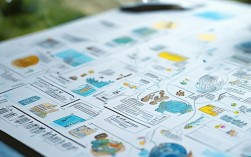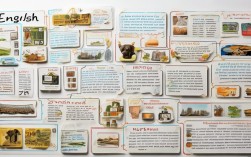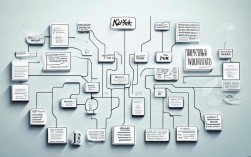中心主题:英语时态
核心概念: 时态是英语中动词的一种形式,用来表示动作或状态发生的时间(过去、过去将来)和体(一般、进行、完成、完成进行)。

第一层:两大维度
- 时间
- 体
第二层:四大时间 × 四个体 = 十六种时态
我们将四大时间(过去、过去将来)与四种体(一般、进行、完成、完成进行)相结合,形成十六种时态。
第三层:十六种时态详解
现在
| 一般 | 进行 | 完成 | 完成进行 | |
|---|---|---|---|---|
| 构成 | do/does | am/is/are + V-ing | have/has + V-ed (p.p.) | have/has + been + V-ing |
| 用法 | 事实/真理:The earth goes around the sun. 习惯/能力:I play basketball every weekend. 状态:I know him well. |
现阶段正在进行的动作:He is reading a book now. 现阶段暂时性的状态:She is living in Shanghai for a month. |
过去的动作对现在的影响或结果:I have lost my keys (I can't find them now). 从过去持续到现在的动作或状态:I have lived here for ten years. |
强调动作的持续性:I have been waiting for you for two hours. (强调“等”这个动作持续了多久) |
| 标志词 | always, usually, often, sometimes, every day, etc. | now, right now, at the moment, Look/Listen, etc. | already, just, yet, ever, never, since, for, so far, etc. | all day, recently, lately, for, since, etc. |
过去
| 一般 | 进行 | 完成 | 完成进行 | |
|---|---|---|---|---|
| 构成 | did + V-ed (p.p.) | was/were + V-ing | had + V-ed (p.p.) | had + been + V-ing |
| 用法 | 过去某个时间发生的动作或状态:I finished my homework yesterday. 过去的习惯:When I was a child, I watched cartoons a lot. |
过去某个时间点正在进行的动作:I was cooking when he called me. 背景描述:It was raining, so we stayed at home. |
过去的过去:He told me he had seen that movie before. (see 发生在 told 之前) | 强调“过去的过去”的持续性:He had been waiting for an hour before the bus arrived. (wait 发生在 arrived 之前,并持续了一小时) |
| 标志词 | yesterday, last week, in 1999, ago, etc. | at 8 o'clock yesterday, this time yesterday, when, while, etc. | by the end of last year, before, after, by the time, etc. | before, by the time, etc. |
将来
| 一般 | 进行 | 完成 | 完成进行 | |
|---|---|---|---|---|
| 构成 | will/shall + V / be going to + V | will be + V-ing / am/is/are going to be + V-ing | will have + V-ed (p.p.) / am/is/are going to have + V-ed (p.p.) | will have been + V-ing / am/is/are going to have been + V-ing |
| 用法 | 将来会发生的动作或状态:I will call you tomorrow. 预测:It will be sunny tomorrow. 意愿/决定:I will help you. (will) 计划/打算:I am going to buy a new car. (be going to) |
将来某个时间点正在进行的动作:This time tomorrow, I will be flying to London. | 在将来某个时间点之前已经完成的动作:By next year, I will have graduated from college. | 强调到将来某个时间点为止已经持续了一段时间的动作:By the end of this year, I will have been working here for five years. |
| 标志词 | tomorrow, next week, in the future, soon, etc. | at this time tomorrow, from 9 to 10 tomorrow, etc. | by tomorrow, by the end of this month, etc. | by the time..., by the end of..., etc. |
过去将来
| 一般 | 进行 | 完成 | 完成进行 | |
|---|---|---|---|---|
| 构成 | would + V / was/were going to + V | would be + V-ing / was/were going to be + V-ing | would have + V-ed (p.p.) / was/were going to have + V-ed (p.p.) | would have been + V-ing / was/were going to have been + V-ing |
| 用法 | 从过去看将来:He said he would come back soon. 过去的计划/打算:I was going to travel, but I got sick. |
从过去看将来某个时间点正在进行的动作:He knew that at 8 o'clock he would be having dinner. | 从过去看,将来某个时间点之前本该完成的动作(但未完成):I thought I would have finished the report by now. | 从过去看,到将来某个时间点为止本该持续了一段时间的动作 |
| 标志词 | (常用于宾语从句中) said, told, knew, thought, etc. | (常用于宾语从句中) said, told, knew, thought, etc. | (常用于宾语从句中) said, told, knew, thought, etc. | (常用于宾语从句中) said, told, knew, thought, etc. |
第四层:重点与难点
A. 特殊用法辨析
-
现在完成时 vs. 一般过去时
- 关键区别: 是否与现在有联系。
- 现在完成时: 强调过去发生,结果影响现在,时间状语不明确,或用
for,since,already,yet,just等。- I have lost my phone. (现在还没找到)
- 一般过去时: 强调动作在过去发生并结束,有明确的过去时间状语。
- I lost my phone yesterday. (昨天丢的,现在可能找到了,也可能没找到,但重点是“丢”这个动作发生在昨天)
-
be going to vs. will
- be going to:
- 事先计划/打算:I'm going to watch a movie tonight. (我已经买好票了)
- 根据现有迹象预测:Look at those black clouds. It's going to rain. (乌云是下雨的迹象)
- will:
- 临时决定/意愿:The phone is ringing. I'll get it. (电话响了,临时决定去接)
- 纯粹预测:I think the economy will improve next year. (没有明显迹象,只是主观预测)
- be going to:
-
used to vs. would
- used to: 过去有,现在没有了,既可指过去的习惯,也可指过去的状态。
- I used to live in Paris. (现在不住巴黎了)
- He used to be very shy. (现在不害羞了)
- would: 只用于描述过去的 重复性习惯动作,不能用于状态。
- When I was a child, my grandmother would tell me stories. (不能说 my grandmother would be very kind)
- used to: 过去有,现在没有了,既可指过去的习惯,也可指过去的状态。
B. 时态一致
- 概念: 在宾语从句中,如果主句是过去时,从句通常也要使用相应的过去时态。
- 示例:
- Tom says, "I am happy." → Tom says (that) he is happy.
- Tom said, "I am happy." → Tom said (that) he was happy.
- Tom said, "I have finished my work." → Tom said (that) he had finished his work.
C. 无时间状语的时态判断
- 、图片描述、小说/戏剧场景、解说词等常使用一般现在时,以增加真实感和即时感。
- China launches a new satellite. (新闻标题)
- Here comes the bus! (车来了)
- In the picture, a little girl is playing with a doll. (图片描述)
总结与建议
- 先抓主干: 理解“时间”和“体”两大维度,记住十六种时态的名称。
- 再记细节: 重点掌握每种时态的构成、核心用法和标志性词汇。
- 勤于练习: 通过造句、阅读和写作,在实际语境中感受和运用时态。
- 对比记忆: 将容易混淆的时态(如
have done和did,be going to和will)放在一起对比,效果更佳。
希望这个思维导图能帮助你构建一个清晰的英语时态知识体系!











